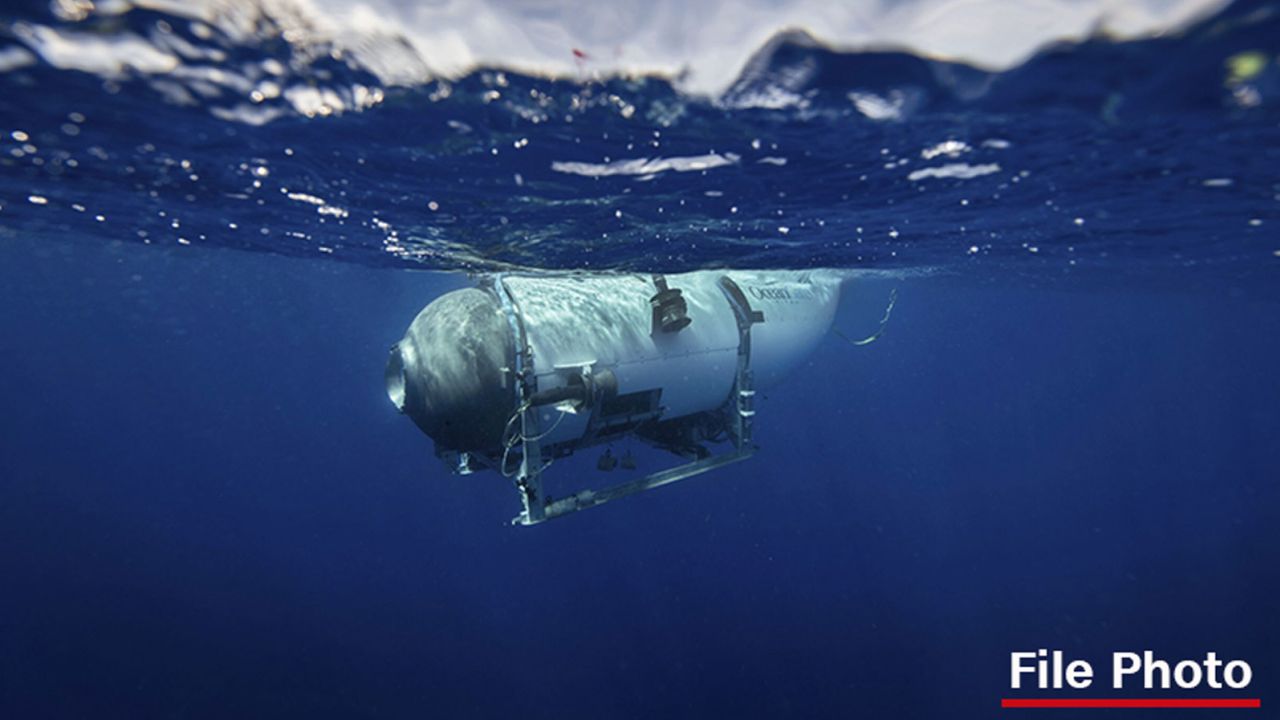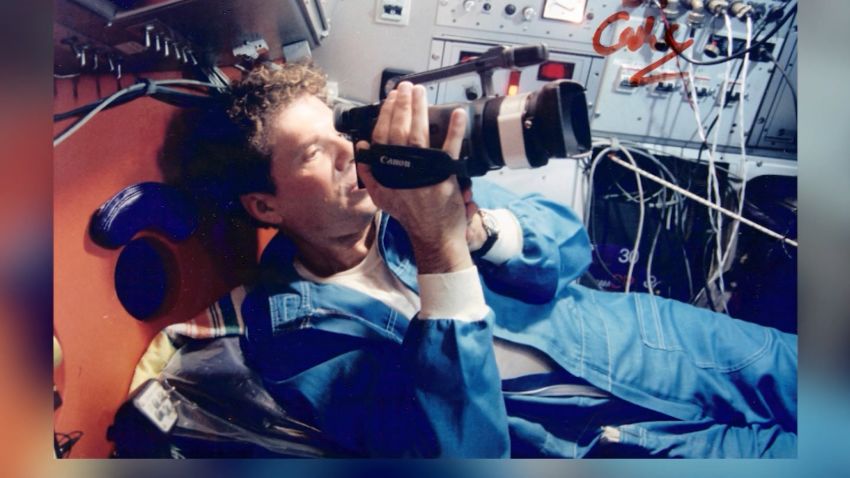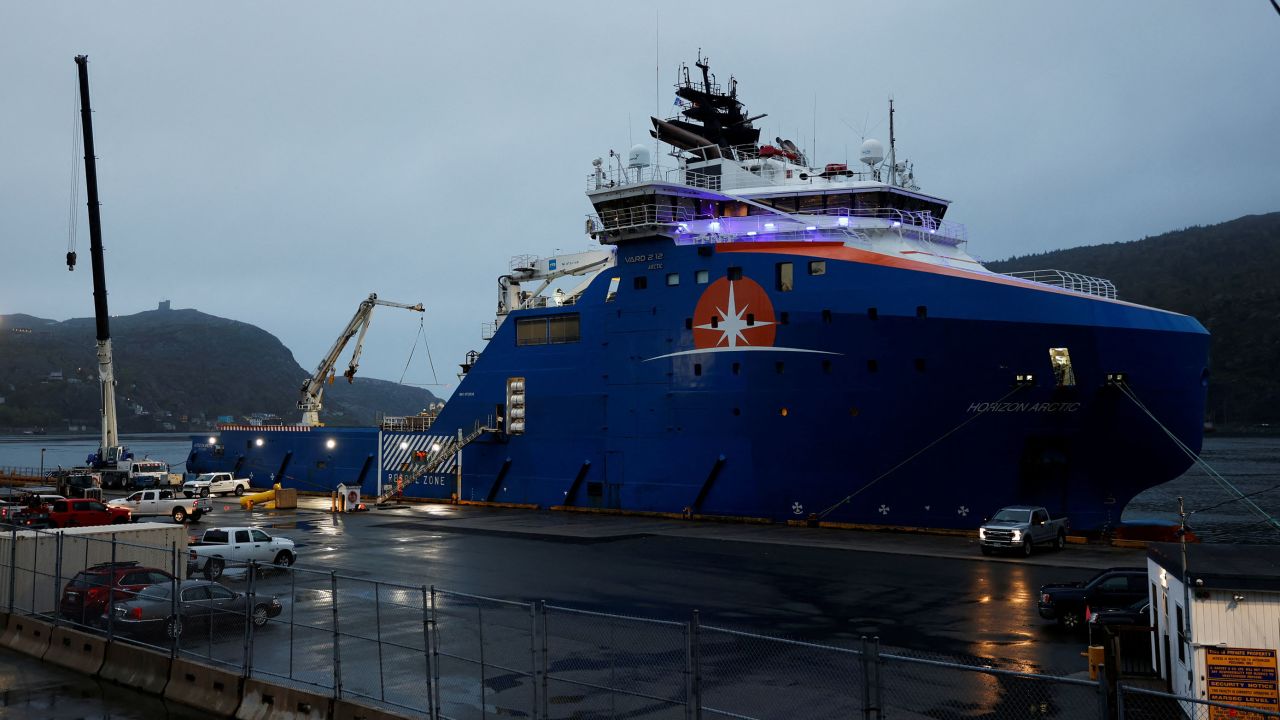CNN
—
The US Coast Guard said Thursday a “debris field” was discovered by a remotely operated vehicle near the Titanic and within the search area for the missing submersible with five people aboard.
“Experts within the unified command are evaluating the information,” the Coast Guard said. It is unclear if this debris field is connected to the missing submersible. The Coast Guard said it plans to host a press briefing at 3 p.m. ET to “discuss findings from the Horizon Arctic’s ROV on the sea floor near the Titanic.”
A spokesperson for Pelagic Research Services confirmed to CNN their remote-operated vehicle, which was the first to conduct a search for the submersible on the sea floor, found the debris field.
The news comes as the search for the vessel, known as the Titan, has reached a “critical” stage, the co-founder of the company operating the submersible said Thursday.
Follow live Titanic submersible updates
“Today will be a critical day in this search and rescue mission, as the sub’s life support supplies are starting to run low,” Guillermo Sohnlein, the co-founder of OceanGate, the company operating the expedition, said in a statement Thursday.
Sohnlein said he is “certain” that pilot Stockton Rush and the crew “realized days ago that the best thing they can do to ensure their rescue is to extend the limits of those supplies by relaxing as much as possible. I firmly believe that the time window available for their rescue is longer than what most people think.”
The Titan began its descent Sunday to explore the wreckage of the Titanic, located about 13,000 feet below sea level in the North Atlantic Ocean, with an estimated 96 hours of life support. The cramped vessel lost contact with its mother ship about 1 hour and 45 minutes into its dive, did not surface as expected and has not been heard from since.
The expedition, which cost participants $250,000, was billed as “a chance to step outside of everyday life and discover something truly extraordinary,” an archived version of OceanGate’s website shows.
Aboard the Titan are Rush, the OceanGate CEO and founder, along with British businessman Hamish Harding, Pakistani billionaire Shahzada Dawood and his son Suleman Dawood, and French diver Paul-Henri Nargeolet, according to relatives and social media posts. Officials have not publicly named those aboard.
The expedition reflects the ongoing fascination with the Titanic’s wreckage more than a century after it hit an iceberg and sank on its maiden voyage, killing more than 1,500 people. The journey is also part of the growing business of wealthy adventure tourism, along with the space flights of Blue Origin or the rise of guided tours to Mount Everest.
The focus on the vessel has also renewed criticisms of OceanGate’s approach to safety from employees and other industry leaders.
Yet even as the Titan’s estimated oxygen levels are depleting, hope for positive news remains.
“We continue to find in particularly complex cases that peoples’ will to live really needs to be accounted for … and so we’re continuing to search and proceed with rescue efforts by bringing this new capability online this morning,” US Coast Guard Rear Admiral John Mauger told NBC on Thursday.
The international search and rescue efforts have kicked into high gear in the past few days.
A remotely operated vehicle was looking for the submersible on the sea floor, the US Coast Guard’s Northeast District tweeted Thursday morning. An ROV from a French vessel has also been deployed, and equipment from Magellan, the team that mapped the Titanic wreckage site last year, was headed to the site to assist.
Further, aircraft are scanning a search zone about twice the size of Connecticut and as deep as 2 1/2 miles, Capt. Jamie Frederick, the response coordinator for the First Coast Guard District, said Wednesday. Medical personnel specializing in dive medicine and a hyperbaric recompression chamber arrived on scene Thursday, according to a spokesperson for the Joint Rescue Coordination Centre Halifax of the Canadian Armed Forces.
Banging noises detected underwater Tuesday and Wednesday in the massive search area provided hope for survivors, though their origin was not clear. The underwater sounds detected by sonar devices on Tuesday first came every 30 minutes and were heard again four hours later, according to an internal US government memo update on the search.
Naval experts were analyzing recordings of the sounds to determine their origin. “I can’t tell you what the noises are,” Frederick said.
If indeed there are survivors, the crew would have “limited rations” of food and water in the 21-foot submersible, which has rudimentary controls and no room for passengers to stretch out, officials have said.
“We need a miracle,” oceanographer and water search expert David Gallo told CNN on Wednesday. “But miracles do happen.”
The number of assets in the search operation is expected to double in the next day or two, Frederick said Wednesday. A Canadian Coast Guard boat with sonar capabilities, the John Cabot, arrived Wednesday, and the US Navy is sending a lift system that can pull heavy objects up from 20,000 feet deep to help if the submersible is found.
“The Coast Guard has done a very good job in putting the right tools with the right team in the right spot. So, the chances are as good as they can be,” Gallo, the senior adviser for strategic initiatives at RMS Titanic Inc., told CNN on Thursday morning.
“It’s tough because the oceans are pitch black, you can only use sound to image effectively, and you’ve got to be pretty much on top of the object to actually see it,” he added.
Environmental factors in the ocean are likely complicating efforts to identify the noises, said Rick Murcar, the international training director for the National Association of Cave Divers. Currents can deflect the sound so it appears it’s coming from miles away from its source, Murcar explained, likening the effort to locate the noise to trying to pinpoint a snare drum in a stadium full of cheering fans and other instruments.
If the submersible is found at depth, it would take a while to bring it to the surface, and there won’t be a way to get oxygen into it, said ocean explorer Tom Dettweiler, who was part of the expedition that discovered the Titanic wreckage in 1985.
“The thing to do would be to bring it up as quickly as possible and open the hatch and get to the people. Unfortunately, it cannot be brought up all that quickly when it is on the end of a cable and dependent on the speed of a winch to bring it up,” he told CNN. “You’re still talking about hours, potentially, to get it up.”

As aircraft, ships, sonar buoys and robots comb through the ocean, experts warn conditions are likely dire aboard the 23,000-pound submersible – especially if it’s still deep underwater.
Ret. Navy Capt. David Marquet, a former submarine captain, described Wednesday what he imagines the five passengers are experiencing in the Titan beyond hunger, thirst and discomfort.
“They’re freezing cold. The water entirely surrounding the ship is at freezing or slightly below. When they exhale, their breath condenses. There’s frost on the inside of the parts of the submarine,” Marquet told CNN’s Jake Tapper. “They’re all huddled together trying to conserve their body heat. They’re running low on oxygen and they’re exhaling carbon dioxide.”
The submersible has a “limited ability” to absorb the exhaled carbon dioxide, which at high levels could trigger headaches, confusion and nausea, Marquet said. “The oxygen and the carbon dioxide and the freezing are what they got to hold onto as long as possible to give the rescuers the time they need.”

Old video shows a submersible caught on Titanic’s propeller
Those onboard will need to conserve energy, said Joe MacInnis, a physician and renowned diver who’s made two trips to the Titanic wreck.
“Resting, breathing as little as possible, and trying to keep calm – that is the most important thing,” he told CNN early Wednesday.
Per Wimmer, an adventurer and acquaintance of Harding and Rush, said he believed they would know to conserve oxygen.
“I still have hope,” Wimmer said on “CNN This Morning.” “I remain optimistic, positive, and hoping for a miracle here, at least until it’s proven otherwise.”
The last communication between the vessel and its mother ship, the Polar Prince, came in at 11:47 a.m. Sunday. With no GPS underwater, the submersible is only guided by text messages from the surface ship.
Indeed, “issues with computer control” were among the reasons Discovery Channel’s “Expedition Unknown” host Josh Gates and his team decided after a 2021 test dive of Titan against filming a segment on the vessel as it “became clear to us at that time that there was a lot that needed to be worked out with the sub,” he said.
“A lot of the systems worked but a lot of them really didn’t. We had issues with thrusters and issues with computer control and things like that. Ultimately, it was a challenging dive,” Gates told CNN’s Anderson Cooper Wednesday.
“We were inside Titan for two or three hours, and there were a lot of things that weren’t really ready for prime time, it seemed,” he said, adding he couldn’t get comfortable with the Titan at that time.

The disappearance of Titan and the international dash to find it have put its operator under the microscope.
At least two former OceanGate employees years ago expressed safety concerns about the vessel’s hull, including the thickness of the material used and testing procedures, CNN has learned. The 23,000-pound craft is made of highly engineered carbon fiber and titanium.
OceanGate Expeditions strayed from industry norms by declining a voluntary, rigorous safety review of the vessel, according to an industry leader. If the company had pursued a certification review “some of this may have been avoided,” Will Kohnen of the Marine Technology Society told CNN on Wednesday.
The company also faced a series of mechanical problems and inclement weather conditions that forced the cancellation or delays of trips in recent years, according to court records. The scuttled excursions led to a pair of lawsuits in which some high-paying customers sought to recoup the cost of trips they said they didn’t take. The complaints alleged that the company overstated its ability to reach the Titanic wreckage.
OceanGate did not respond to the claims in court and could not be reached for comment.
Some expeditions were delayed after OceanGate was forced to rebuild the Titan’s hull because it showed “cyclic fatigue” and wouldn’t be able to travel deep enough to reach the Titanic’s wreckage, according to a 2020 article by GeekWire, which interviewed the company’s CEO.